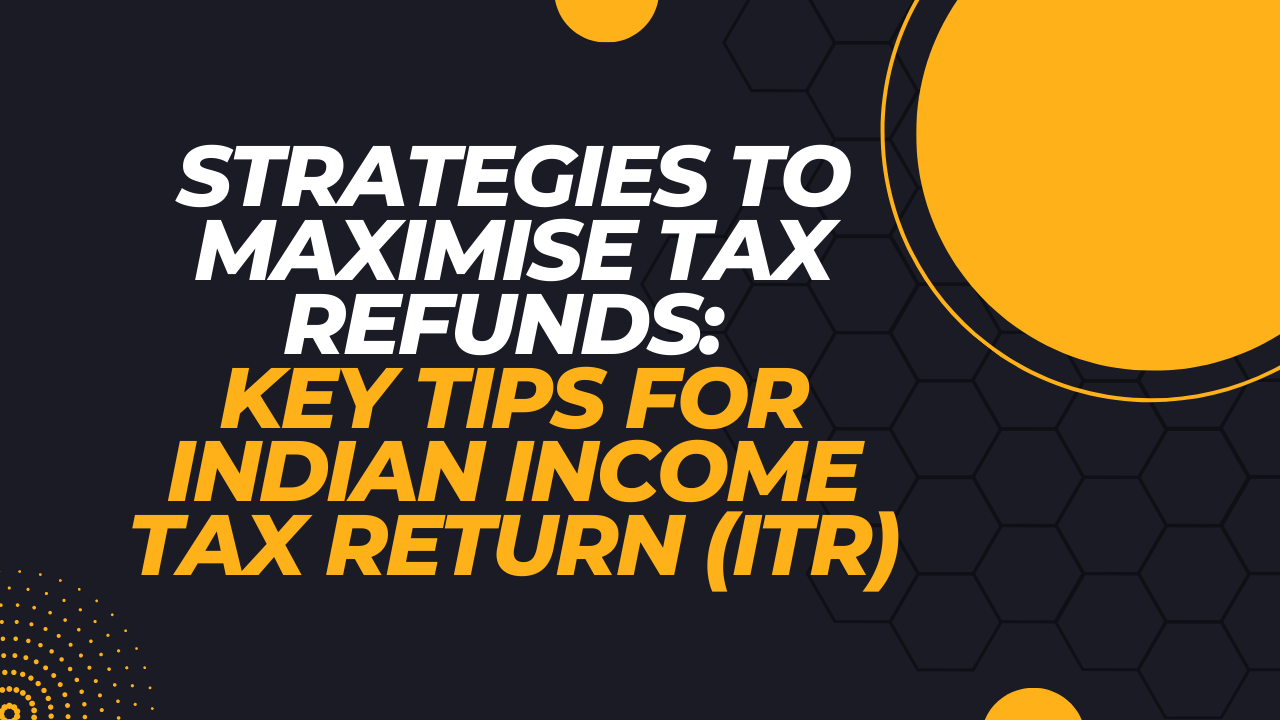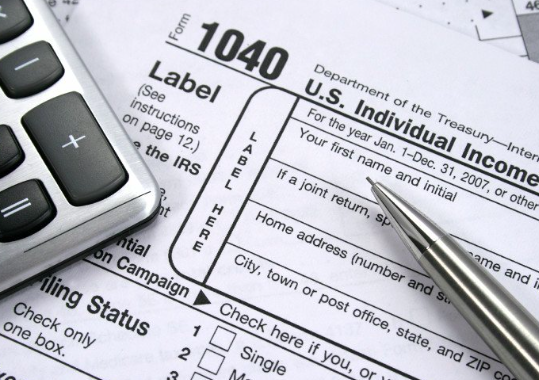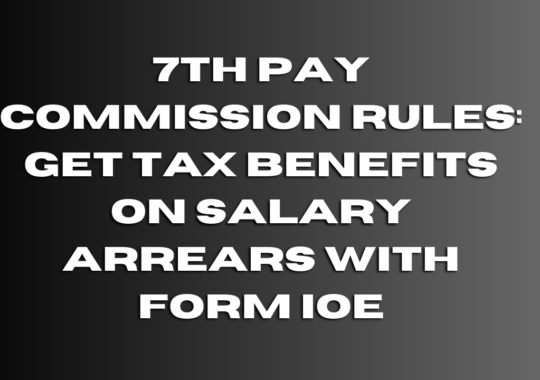Maximizing tax refunds is crucial for individuals seeking to optimize their financial situation and minimize their tax liabilities. By understanding the available tax deductions and exemptions, taxpayers can take advantage of various strategies to reduce their taxable income and increase their chances of receiving a higher tax refund. This introduction provides an overview of the importance of maximizing tax refunds and sets the stage for exploring key tips for Indian Income Tax Return (ITR) filing.
Understanding the Tax Deductions and Exemptions Available
To maximize tax refunds, it is essential to have a clear understanding of the tax deductions and exemptions available under the Indian tax system. By utilizing these provisions effectively, taxpayers can reduce their taxable income and potentially increase their tax refunds. Here are some key deductions and exemptions to consider:
Standard Deduction:
Employees and pensioners can claim a standard deduction of a fixed amount from their salary or pension income. This deduction helps reduce the taxable income.
Section 80C Deductions:
Under Section 80C, taxpayers can claim deductions on specified investments and expenses, such as contributions to Employee Provident Fund (EPF), Public Provident Fund (PPF), National Savings Certificates (NSC), life insurance premiums, and tuition fees paid for children’s education. The maximum limit for deduction under Section 80C is Rs. 1.5 lakh.
Health Insurance Premiums:
Deductions can be claimed for premiums paid for health insurance policies under Section 80D. Taxpayers can claim deductions for premiums paid for themselves, their spouse, dependent children, and parents.
Home Loan Interest and Principal Repayments:
Deductions can be claimed on home loan interest payments under Section 24(b) and on principal repayments under Section 80C. These deductions can help reduce taxable income and increase tax refunds.
Leave Travel Allowance (LTA):
LTA can be claimed for expenses incurred on domestic travel during a block of four years. Taxpayers can claim exemptions on travel expenses for themselves and their family members.
Deductions for Donations:
Contributions made to eligible charitable organizations and institutions under Section 80G are eligible for deductions. Taxpayers can claim deductions on donations made to specified funds and institutions.
Deductions for Education Loans:
Interest paid on education loans can be claimed as a deduction under Section 80E. This deduction is available for a certain number of years from the start of loan repayment.
Understanding and utilizing these tax deductions and exemptions can significantly impact the final tax liability and maximize tax refunds. It is important to thoroughly review the eligibility criteria, limits, and documentation requirements for each deduction or exemption.
By taking advantage of the available tax deductions and exemptions, taxpayers can reduce their taxable income and increase their chances of receiving a higher tax refund. It is advisable to consult with a tax professional or accountant to ensure proper compliance with tax laws and to explore all available opportunities for maximizing tax refunds.
Maximize Tax Benefits for Home Loan Interest and Principal Repayments
For individuals who have taken a home loan, maximizing tax benefits on home loan interest and principal repayments can significantly reduce their taxable income and increase their tax refunds. Here are some key strategies to consider:
- Home Loan Interest Deduction: Under Section 24(b) of the Income Tax Act, taxpayers can claim deductions on the interest paid on a home loan. The maximum deduction allowed is up to Rs. 2 lakh per year for a self-occupied property. For a let-out or deemed let-out property, there is no upper limit on the deduction.
- Home Loan Principal Repayment Deduction: Under Section 80C, taxpayers can claim deductions on the principal repayment of a home loan. This falls under the overall limit of Rs. 1.5 lakh available for various investments and expenses, including EPF, PPF, and life insurance premiums.
- Joint Home Loan: If you have taken a joint home loan with a co-borrower, such as your spouse, both individuals can claim tax benefits on the interest and principal repayments in proportion to their share in the loan.
- Pre-construction Period Interest: Taxpayers can claim deductions on the interest paid during the pre-construction period, i.e., the period before the construction of the property is completed. The interest can be claimed in five equal installments starting from the year of completion of construction.
- Affordable Housing Deduction: Under Section 80EEA, an additional deduction of up to Rs. 1.5 lakh can be claimed on home loan interest for first-time homebuyers purchasing affordable housing properties.
Capitalize on NPS (National Pension System) Contributions
The National Pension System (NPS) offers individuals an opportunity to save for retirement while also providing tax benefits. Here’s how you can capitalize on NPS contributions:
- Tier-I Account Contributions: Contributions made to the Tier-I NPS account are eligible for tax deductions under Section 80CCD(1). Taxpayers can claim a deduction of up to 10% of their salary (for salaried individuals) or gross total income (for self-employed individuals) within the overall limit of Rs. 1.5 lakh available under Section 80C.
- Additional Deduction for NPS Contributions: An additional deduction of up to Rs. 50,000 can be claimed under Section 80CCD(1B) for contributions made to the Tier-I NPS account. This deduction is over and above the deduction available under Section 80CCD(1).
- Employer’s NPS Contribution: Contributions made by an employer to an employee’s NPS account are eligible for deduction under Section 80CCD(2). The deduction is available for up to 10% of the employee’s salary.
- Voluntary Contributions to NPS: Taxpayers can also make voluntary contributions to their NPS accounts, known as Tier-II accounts. While these contributions do not provide any specific tax benefits, the funds in the Tier-II account can be used for investments or withdrawals as per the individual’s requirement.
By maximizing tax benefits on home loan interest and principal repayments and capitalizing on NPS contributions, taxpayers can significantly reduce their taxable income and increase their tax refunds. It is important to understand the specific eligibility criteria, limits, and documentation requirements for each deduction or benefit. Seeking advice from a tax professional or accountant is recommended to ensure compliance with tax laws and optimize tax benefits.
Optimize Tax Benefits for Education Loans
Education loans provide individuals with the means to finance higher education for themselves or their dependents. By utilizing the available tax benefits, individuals can optimize their tax savings and increase their chances of receiving a higher tax refund. Here are some strategies to consider for maximizing tax benefits on education loans:
Deduction on Interest Payments:
Under Section 80E of the Income Tax Act, individuals can claim a deduction on the interest paid on education loans. This deduction is available for a specified number of years, starting from the year of commencement of loan repayment. There is no upper limit on the deduction amount.
Eligible Courses:
The deduction on education loan interest can be claimed for loans taken for higher education, including graduate, postgraduate, and professional courses in India or abroad. The courses should be pursued after completing senior secondary education (12th grade) or its equivalent.
Loan for Self, Spouse, or Children:
The deduction can be claimed by the individual who has taken the education loan for themselves, their spouse, or their children. However, it is important to note that loans taken for siblings or relatives are not eligible for this deduction.
No Deduction for Principal Repayment:
Unlike home loans, there is no separate deduction available for the principal repayment of education loans. The deduction under Section 80E is limited to the interest paid on the loan.
Loan Documentation:
Maintain proper documentation of the education loan, including loan statements, interest certificates, and repayment proofs. These documents serve as evidence to support the deduction claim and should be retained for future reference.
Use Loan for Specified Purposes:
Ensure that the education loan is used solely for the purpose of financing higher education. Expenses related to tuition fees, books, equipment, and hostel fees are generally considered eligible for the deduction. Other personal expenses may not qualify.
Conclusion: Implementing Strategies for Maximizing Tax Refunds
Maximizing tax refunds requires careful planning and implementation of strategies that align with the provisions of the tax laws. By optimizing tax benefits for home loan interest and principal repayments, capitalizing on NPS contributions, and taking advantage of education loan deductions, individuals can effectively reduce their taxable income and increase their chances of receiving a higher tax refund.
It is important to understand the specific rules and regulations governing each deduction or benefit, ensuring compliance with the tax laws. Seeking advice from a tax professional or accountant is highly recommended to fully understand the eligibility criteria, documentation requirements, and the optimal strategies to maximize tax refunds.
By implementing these strategies, individuals can not only reduce their tax liabilities but also make the most of the available tax benefits provided by the government. Remember to review the latest updates in tax laws and consult with a tax professional to ensure accurate and compliant tax filing, ultimately leading to the maximization of tax refunds.
Also Read:
- Need Emergency Funds Quickly?
- Investing In Fixed-Income Instruments For High Returns? Is It The Right Strategy?
- SIP or Recurring Deposit: Which One You Should Choose?
- How to Use NFT Marketplaces for Buying and Selling?




